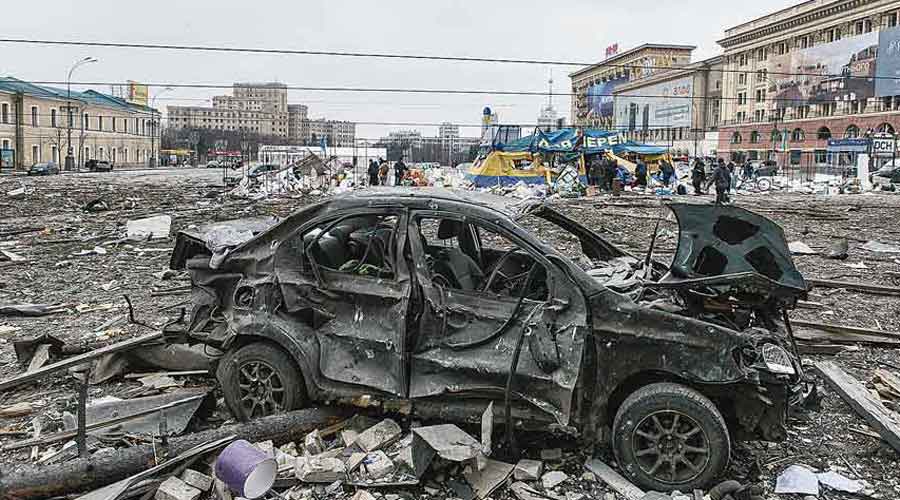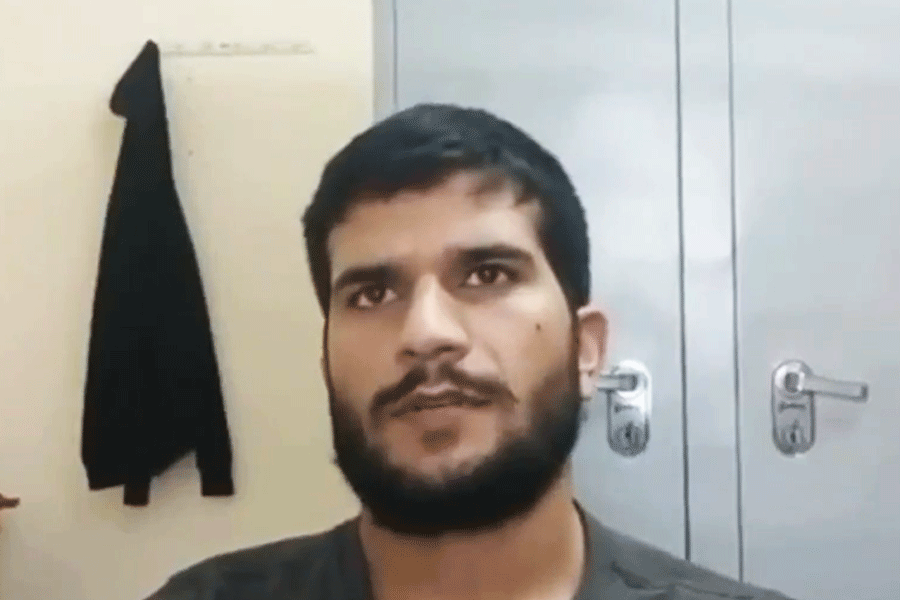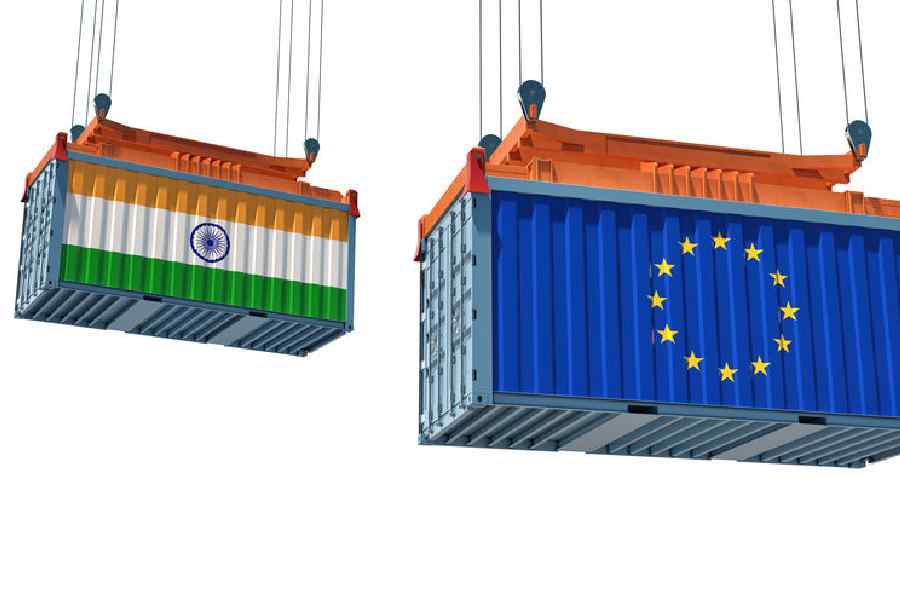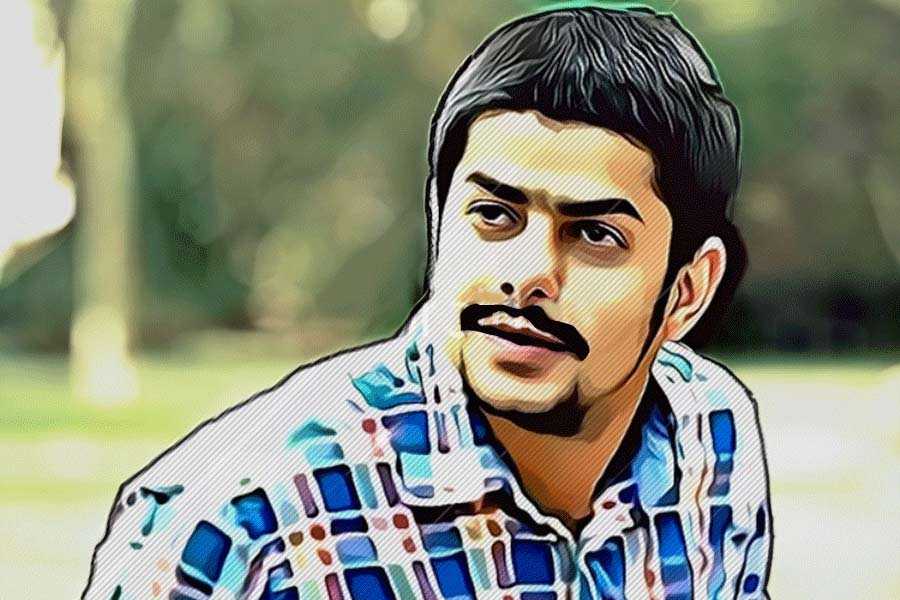The city of Kyiv covers 840 square kilometres and is divided by a broad river. It has about 500,000 structures — factories, ornate churches and high-rise apartments — many on narrow, winding streets. Roughly 2 million people remain after extensive evacuations of women and children.
To the northwest and to the east, tens of thousands of Russian troops are pressing towards the city, Ukraine’s capital, backed by columns of tanks, armoured vehicles and artillery. Inside Kyiv, Ukrainian soldiers and civilian volunteers are fortifying the downtown with barriers, anti-tank mines and artillery.
Kyiv remains the biggest prize of all for the Russian military; it is the seat of government and ingrained in both Russian and Ukrainian identity. But capturing it, military analysts say, would require a furious and bloody conflict that could be the world’s biggest urban battle in 80 years.
“What we are looking at in Kyiv would dwarf anything we’ve seen since World War II,” said David Kilcullen, a retired lieutenant colonel in the Australian army who has extensively studied urban combat.
“If they really, really want to level Kyiv, they can,” he said of the Russian leadership. “But the level of political and economic damage would be tremendous.”
For comparison, one of the largest urban battles this century was the nine-month siege of Mosul, Iraq, in 2016 and 2017 to oust its Islamic State occupiers. Mosul covers 180 square kilometres and had a wartime population of about 750,000 people — a fraction of the numbers for Kyiv, where the metropolitan area’s pre-war population was 3.6 million.
Negotiations over a ceasefire are continuing, and a long, heated battle over Kyiv is not inevitable. Despite superior numbers and firepower, Russia has not achieved a breakthrough. A western official, in a briefing with reporters this past week, said the Russians had taken heavy casualties, been unable to establish any meaningful off-road presence, and — perhaps most surprising — failed to achieve dominance in the air.
But the first stages of the battle have already begun, with cruise missile bombardments, troop movements to encircle the city and a fight to gain air superiority.
Savage, street-by-street gunfights akin to guerrilla warfare have broken out in northwestern suburbs like Irpin, an important gateway into the city. It could be the beginning of a long-drawn-out siege using hunger and street fighting to advance towards the city centre.
After three weeks of fighting in the suburbs, Ukrainian soldiers and volunteers, who are operating in loosely organised small units and relying heavily on ambushes, are growing more confident in the city’s defence. Part of their strategy is to make the assault so costly for the Russian army in lives that it will exhaust or demoralise its troops before they reach the city centre.
“There’s no talk of capitulation for Kyiv,” said Lt Tetiana Chornovol, the commander of an anti-tank missile unit operating on the outskirts of the city. “Everything is going far better than we thought.”
Lt Chornovol, 42, is a former activist in Ukraine’s street protest movement who sent her two children to safety before reporting for duty as a reserve officer. She commands two teams of a half-dozen or so people each, firing Ukrainian-made, tripod-mounted missiles, which they transport to ambush positions in their personal cars.
Lt Chornovol drives a red Chevy Volt electric hatchback, which she calls an “ecologically clean killing machine”.
Interviewed beside a burning grocery warehouse in the suburban town of Brovary, the lieutenant popped the hatchback to reveal a beige tube, holding a Stugna-P missile. It has a range of 4.8km and hits a target within a diameter of one foot.
Seemingly unfazed by combat, Lt Chornovol described the Ukrainian tactic of ambushes that has defined the early phases of the battle for the capital. Last week, she said, she blew up a Russian tank a few miles east of Brovary on the M01 highway.
“We look for firing positions where we can see a stretch of road,” Lt Chornovol said, adding that “we know a column will drive on the road” eventually. With her car parked some distance away, covered in camouflage, she and her team lay in wait in a tree line for three days before a Russian column came rumbling down the road.
When the command came to open fire, she used a laser to lock in on the tank, pushed a button, then watched as the tank lit up in flames before she rushed back to her car to escape return fire. “I shoot at armour,” she said, when asked about the human toll. “If they climb inside, it’s their fault.”
The tactics Lt Chornovol described are indicative of the city’s defences, which rely on a blend of sophisticated air defence systems, army troops, civilian volunteers and paramilitary organisations.
An urban environment favours booby traps, ambushes and lightly armed but mobile defenders against a regular army. Ukrainians have laid out pie-sized anti-tank mines on the shoulders of roads, which can be quickly dragged across streets to block advances. In cities, the urban grid channels the invader’s armoured vehicles into narrow streets, where they become vulnerable.
The Russians also have a formidable force, but of a different nature. They rely on superior troop numbers and powerful, but less mobile, weaponry.
Russian tanks, for instance, are moving methodically in long columns through small towns outside Kyiv, rarely straying from roads. At times, the vehicles are creating gigantic traffic jams.
On the Dnieper river’s west bank, soldiers and vehicles from two Siberia-based Combined Arms Armies — parlance for large Russian military groupings — are creeping forward, said Michael Kofman, the director of Russia studies at the CNA, a research institute in Arlington, Virginia. Russian special forces units, or Spetsnaz, have turned the once-tranquil suburb of Irpin into a battle zone, he said.
On the eastern bank, Russia’s 41st Combined Arms Army has been probing into outlying towns like Brovary, where Lt Chornovol blew up a Russian tank.
Why the Russians are advancing tanks into the urban landscape of Kyiv’s outskirts, where they are vulnerable to ambush, is something of a mystery, Kofman said. “They are trying to make quick progress down roads while the Ukrainians are trying to engage them in cities, rather than out in the open fields,” he said.
And time is not on the Russians’ side. Kyiv is surrounded by bogs, thawing now with the coming spring and hampering any efforts by the Russians to fan out with their heavy weapons around the city’s perimeter. Tanks that venture off roads are already sinking into the mud.
It remains unclear whether the Russian army will attempt a full urban assault, Kofman said, but the movements so far suggest plans to at least encircle Kyiv.
That will require gaining dominance in the sky, which Russia has unsuccessfully been trying to achieve. Ukrainian and Russian pilots have clashed in dogfights over Kyiv and a Russian jet crashed into one neighbourhood. Sometimes, the plumes of Ukrainian surface-to-air missiles can be seen rising into the sky.
Russia has failed to control the sky over Kyiv, analysts say, because it has not destroyed the city’s air defence missiles or all the secretive air strips in western Ukraine used by Ukrainian pilots in flights to defend the capital.
To fully encircle Kyiv, the Russians must engage in several more suburban battles. At that point, two options would open for the Russian military, according to Kilcullen, the expert on urban combat: starve the city or try a block-by-block assault.
Modern cities typically have limited stocks of food, as grocery stores rely on regular deliveries, and Kyiv is no exception. But severe food shortages would most likely not begin in Kyiv for at least a month, according to Kilcullen. For now, a highway to the southwest remains open for supplies of weapons and food.
Street fighting, on the other hand, would cause significant casualties for the invaders. The Russian military might also skip some steps of a classic urban assault, trying, for example, a special forces raid on the city centre or a battle before the encirclement is completed, Kilcullen said.
And despite Ukrainian tactical successes in the battle for the suburbs using small units like Lt Chornovol’s ambush teams, the Russian force remains a formidable threat, said Dima Adamsky, an expert on Russian security policy at Reichman University in Israel.
“It is adapting,” he said, “and it is continuing to fulfil its operational plans.”
New York Times News Service











